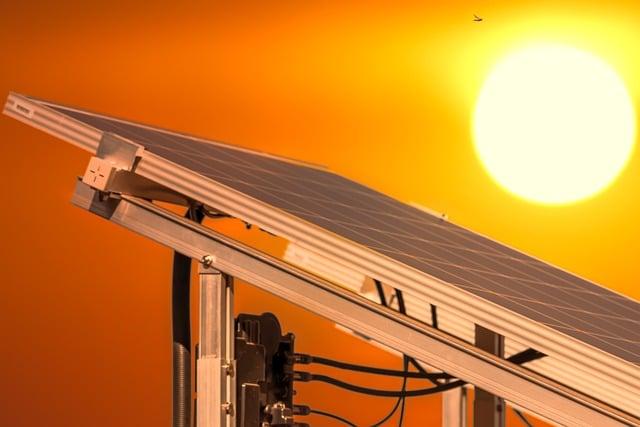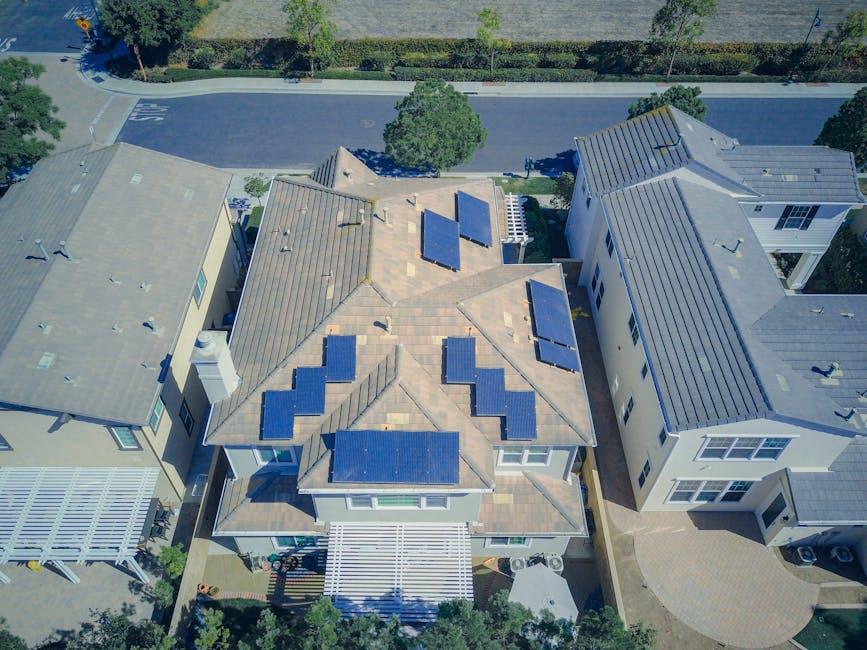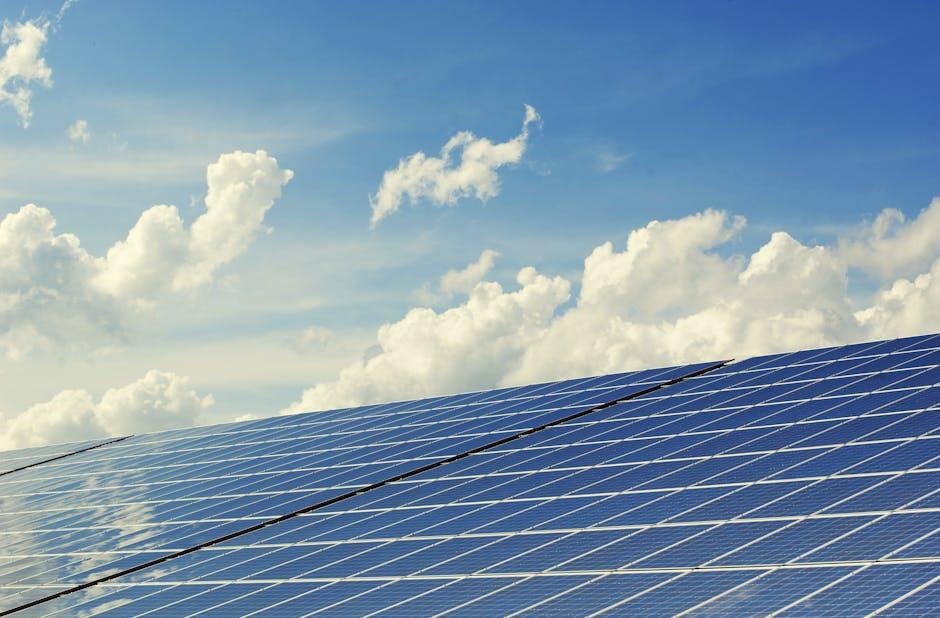In a world increasingly defined by its pursuit of sustainable solutions, the sun—our oldest companion—emerges as a formidable contender in the race to redefine energy landscapes. Imagine a future where vast arrays of solar panels shimmer like modern-day sunflowers, capturing the sun’s generous rays and transforming them into a relentless stream of clean power. This vision teeters on the brink of reality, sparking a compelling debate: could commercial solar energy, with its promise of sustainability and innovation, eventually usurp traditional power grids? As we stand at this pivotal juncture, exploring the potential of solar energy to eclipse conventional power infrastructures reveals a fascinating narrative of technological evolution, economic considerations, and environmental imperatives. This article delves into the heart of this discussion, examining whether the solar revolution can truly become the backbone of our energy future, or if it remains a complementary player in the grand scheme of global power supply.
Harnessing the Sun: A New Dawn for Energy Independence
As the world grapples with the ever-increasing demand for energy and the pressing need to reduce carbon emissions, commercial solar power emerges as a beacon of hope. This shift towards harnessing solar energy has the potential to revolutionize our energy landscape. With advancements in photovoltaic technology, the efficiency and affordability of solar panels have dramatically improved, making them a viable alternative to traditional power grids. In fact, large-scale solar farms and rooftop installations are already beginning to supplement—and in some cases, replace—conventional power sources in various regions. This transformation is not just about embracing a cleaner energy source; it’s about ensuring energy security and independence.
- Cost Efficiency: As solar technology becomes more accessible, businesses can significantly cut down on energy costs, fostering economic growth.
- Environmental Impact: Solar power reduces the carbon footprint, contributing to a more sustainable future.
- Energy Security: By decreasing reliance on fossil fuels, countries can achieve greater energy independence.
- Job Creation: The solar industry is a burgeoning field, offering numerous opportunities in manufacturing, installation, and maintenance.

Economic Viability: Solars Potential to Power the Future
As we navigate through the era of sustainability, the question arises: can solar energy truly become a dominant force in our power systems? The economic viability of commercial solar energy hinges on several compelling factors that could redefine our energy landscape. Cost efficiency stands at the forefront, as solar technology becomes increasingly affordable. With advancements in photovoltaic technology and mass production, the cost of solar panels has plummeted over the last decade, making it a competitive alternative to traditional power sources.
- Decreased installation costs: Innovations in solar panel design and streamlined installation processes contribute to lower initial costs.
- Incentives and tax benefits: Many governments offer attractive subsidies and tax breaks to encourage solar adoption, easing the financial burden for businesses.
- Energy independence: Businesses can shield themselves from volatile energy markets by generating their own power, ensuring stable long-term savings.
Moreover, the scalability of solar installations presents a unique advantage. Unlike traditional grids that require significant infrastructure investment, solar setups can be tailored to fit any size of operation, from small businesses to sprawling industrial complexes. As technology continues to evolve, the potential for solar energy to revolutionize the way we power our world becomes not just a possibility, but an imminent reality.

Technological Innovations Driving the Solar Revolution
The surge in solar energy adoption is being propelled by a wave of technological breakthroughs that are transforming the landscape of renewable power. Advanced photovoltaic cells, boasting higher efficiency rates, are enabling more energy to be harnessed from the same amount of sunlight. These innovations are complemented by the development of bifacial solar panels, which capture sunlight on both sides, thus maximizing energy output. Alongside these advancements, perovskite solar cells are emerging as a game-changer, offering the potential for low-cost and highly efficient solar power solutions.
Beyond the panels themselves, the integration of smart grid technologies and energy storage systems is crucial in making commercial solar a viable alternative to traditional power grids. These innovations include:
- Battery storage solutions: enabling energy to be stored and used during non-sunny periods.
- Artificial intelligence: optimizing energy consumption and predicting solar energy production.
- Blockchain technology: facilitating peer-to-peer energy trading and ensuring transparent transactions.
These cutting-edge technologies not only enhance the efficiency and reliability of solar power but also pave the way for a more decentralized and resilient energy infrastructure.
Strategic Steps to Transition from Grid Dependency to Solar Autonomy
Embracing solar autonomy involves a series of strategic steps that not only ensure a seamless transition but also maximize the potential benefits of renewable energy. The journey begins with a comprehensive energy audit to assess current consumption patterns and identify opportunities for energy efficiency improvements. This evaluation lays the foundation for designing a customized solar solution that aligns with the specific needs and goals of the business.
Key steps include:
- Site Assessment: Conduct a detailed analysis of the property’s solar potential, considering factors like roof space, sun exposure, and structural integrity.
- Technology Selection: Choose the right mix of solar technologies and storage solutions that offer optimal performance and scalability.
- Financial Planning: Explore funding options, tax incentives, and rebates to make the investment more viable and attractive.
- Integration Strategy: Develop a plan for integrating solar systems with existing energy infrastructure to ensure reliability and continuity.
By following these strategic steps, businesses can effectively reduce their reliance on traditional power grids and move towards a more sustainable and independent energy future.
The Conclusion
As we stand on the brink of a new energy era, the question of whether commercial solar could replace traditional power grids is more relevant than ever. This exploration into the potential of solar power reveals a landscape rich with possibilities and challenges alike. While the sun offers an abundant and renewable source of energy, the path to fully harnessing its power requires innovation, investment, and adaptation.
The world watches as technology evolves and policy frameworks shift, with solar energy gradually illuminating a future where sustainability might finally meet reliability. Yet, the journey is not without its hurdles, as infrastructure, storage, and economic factors weave a complex tapestry of considerations.
As the shadows of uncertainty and opportunity dance, one thing remains clear: the conversation about our energy future is just beginning. Whether commercial solar will completely replace traditional power grids or simply complement them, its role in shaping tomorrow’s energy landscape is undeniable. With eyes set on the horizon, the world waits to see if solar will become the beacon that guides us toward a more sustainable future.

































